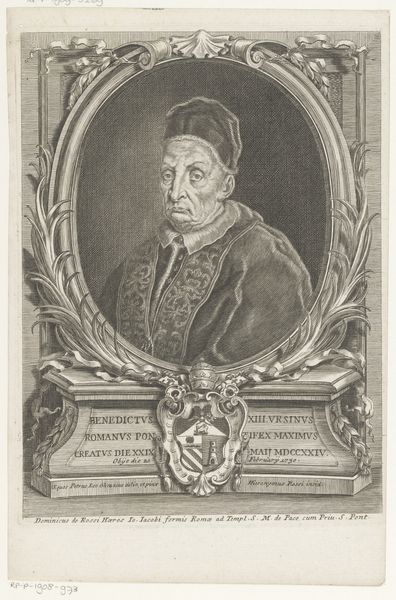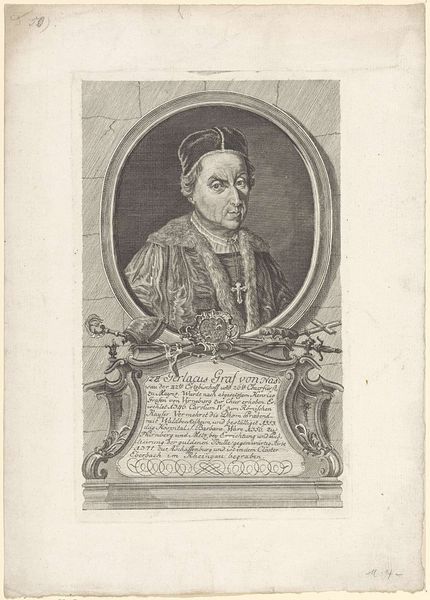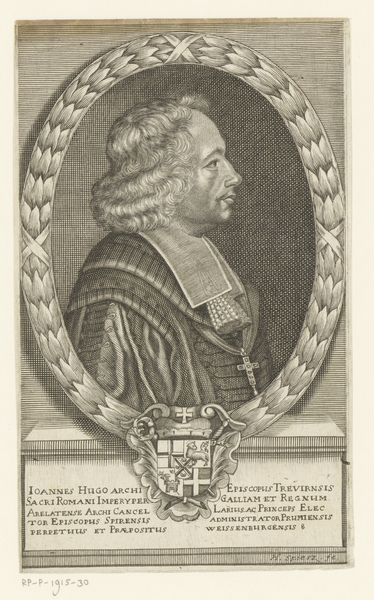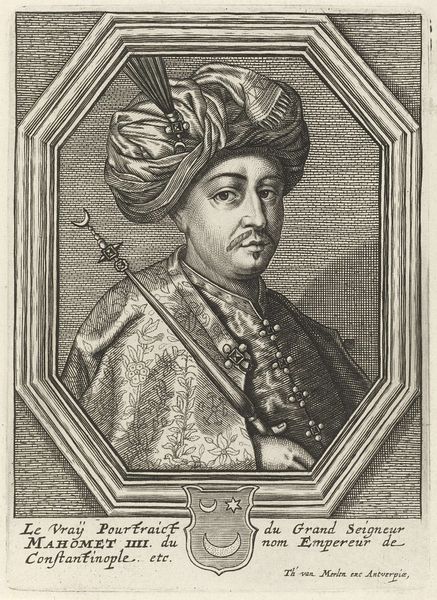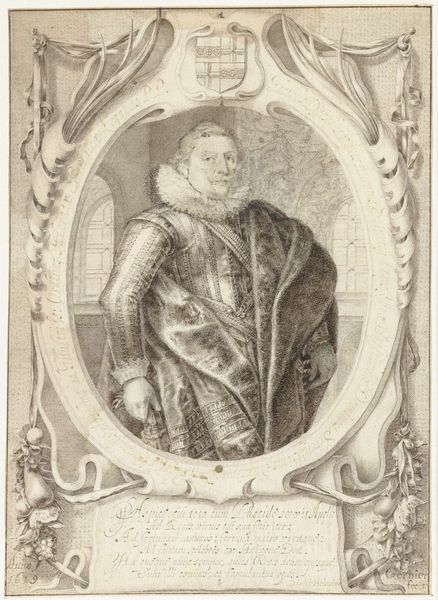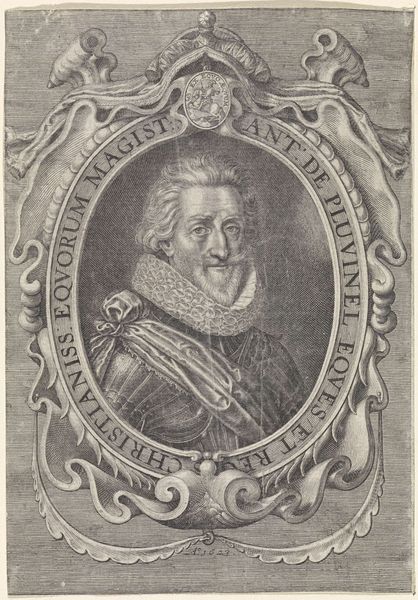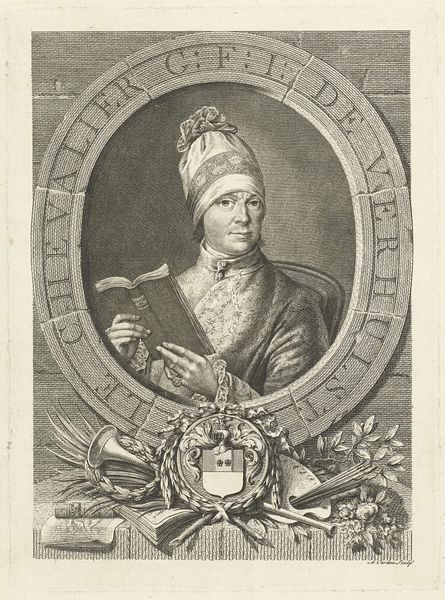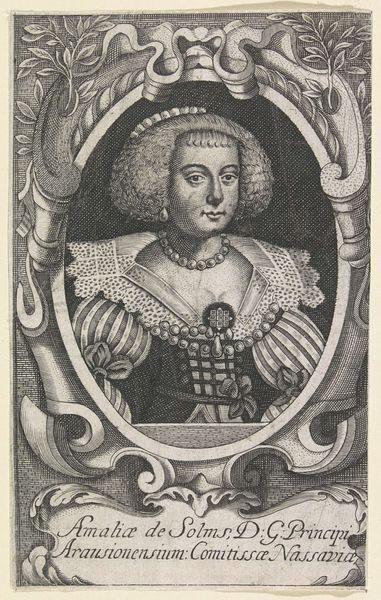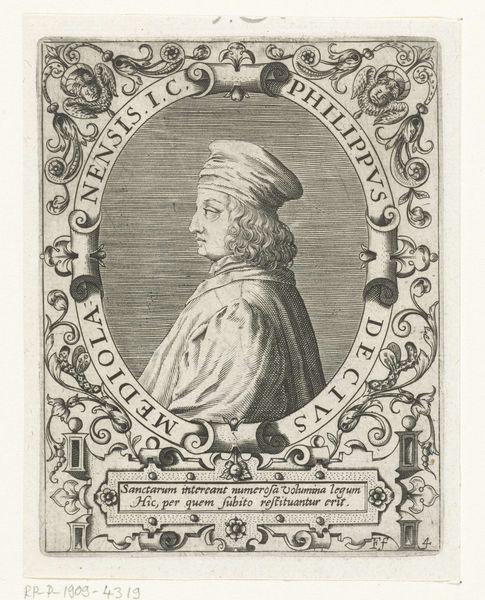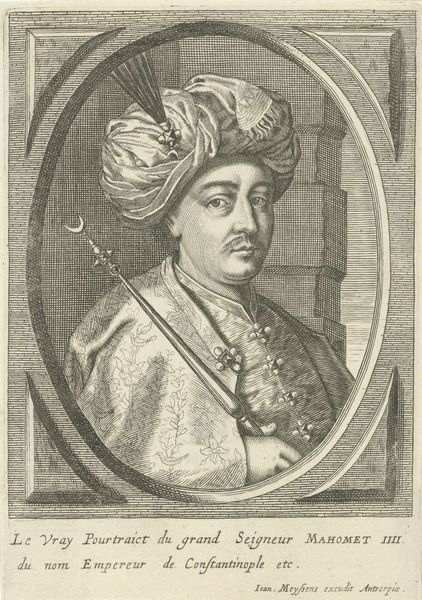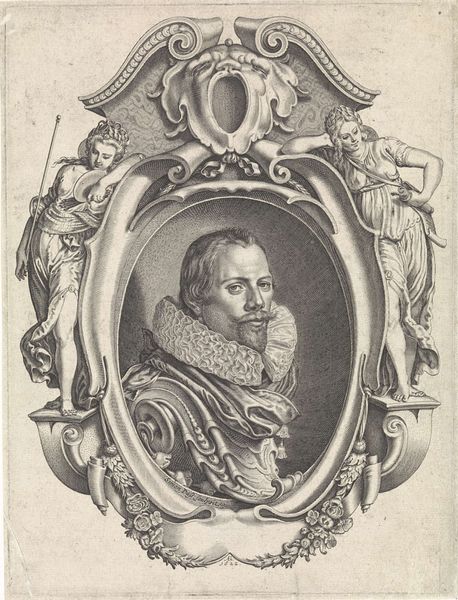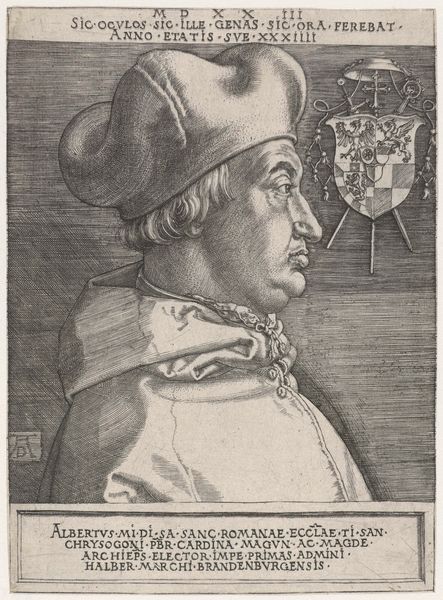
engraving
#
portrait
#
baroque
#
history-painting
#
engraving
Dimensions: height 146 mm, width 95 mm
Copyright: Rijks Museum: Open Domain
Jan Baptist Jongelinx created this print of Adolphe de Ravestein, Duke of Cleves, sometime after 1689, likely using etching or engraving techniques. Its purpose was to represent and disseminate the image of a member of the aristocracy. Consider how the image creates meaning through visual codes, cultural references, and historical associations. Jongelinx was from the Southern Netherlands, a place with deeply entrenched traditions of aristocratic patronage. So how might the subject’s clothing, bearing, and accoutrements signal status to the work’s contemporary audience? The fur mantle and ornate jewelry communicate power, wealth, and status. Meanwhile, the elaborate frame suggests the sitter's elevated position in society. Understanding the full meaning of a work like this requires research into the aristocratic culture of the period, including its patronage networks and structures of social power. Only then can we fully appreciate the significance of this portrait as a cultural artifact.
Comments
No comments
Be the first to comment and join the conversation on the ultimate creative platform.
